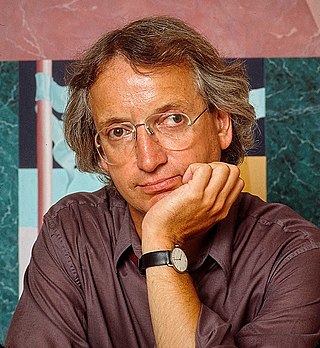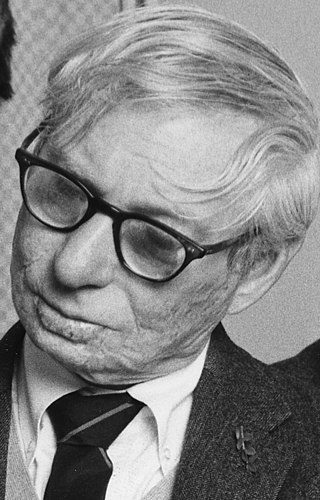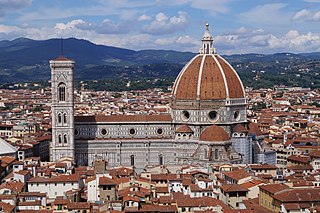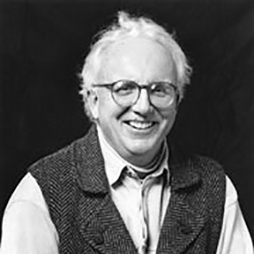
Ludwig Mies van derRohe was a German-American architect, academic, and interior designer. He was commonly referred to as Mies, his surname. He is regarded as one of the pioneers of modern architecture.

Michael Graves was an American architect, designer, and educator, and principal of Michael Graves and Associates and Michael Graves Design Group. He was a member of The New York Five and the Memphis Group and a professor of architecture at Princeton University for nearly forty years. Following his own partial paralysis in 2003, Graves became an internationally recognized advocate of health care design.

Richard Meier is an American abstract artist and architect, whose geometric designs make prominent use of the color white. A winner of the Pritzker Architecture Prize in 1984, Meier has designed several iconic buildings including the Barcelona Museum of Contemporary Art, the Getty Center in Los Angeles, the High Museum of Art in Atlanta, and San Jose City Hall. In 2018, some of Meier's employees accused him of sexual assault, which led to him resigning from his firm in 2021.

Louis Isadore Kahn was an Estonian-born American architect based in Philadelphia. After working in various capacities for several firms in Philadelphia, he founded his own atelier in 1935. While continuing his private practice, he served as a design critic and professor of architecture at Yale School of Architecture from 1947 to 1957. From 1957 until his death, he was a professor of architecture at the School of Design at the University of Pennsylvania.

Modern architecture, also called modernist architecture, was an architectural movement and style that was prominent in the 20th century, between the earlier Art Deco and later postmodern movements. Modern architecture was based upon new and innovative technologies of construction ; the principle functionalism ; an embrace of minimalism; and a rejection of ornament.

Peter David Eisenman is an American architect, writer, and professor. Considered one of the New York Five, Eisenman is known for his high modernist and deconstructive designs, as well as for his authorship of several architectural books. His work has won him several awards, including the Wolf Prize in Arts.

Postmodern architecture is a style or movement which emerged in the 1960s as a reaction against the austerity, formality, and lack of variety of modern architecture, particularly in the international style advocated by Philip Johnson and Henry-Russell Hitchcock. The movement was formally introduced by the architect and urban planner Denise Scott Brown and architectural theorist Robert Venturi in their 1972 book Learning from Las Vegas. The style flourished from the 1980s through the 1990s, particularly in the work of Scott Brown & Venturi, Philip Johnson, Charles Moore and Michael Graves. In the late 1990s, it divided into a multitude of new tendencies, including high-tech architecture, neo-futurism, new classical architecture, and deconstructivism. However, some buildings built after this period are still considered postmodern.

Charles Alexander Jencks was an American cultural theorist, landscape designer, architectural historian, and co-founder of the Maggie's Cancer Care Centres. He published over thirty books and became famous in the 1980s as a theorist of postmodernism. Jencks devoted time to landform architecture, especially in Scotland. These landscapes include the Garden of Cosmic Speculation and earthworks at Jupiter Artland outside Edinburgh. His continuing project Crawick Multiverse, commissioned by the Duke of Buccleuch, opened in 2015 near Sanquhar.

Yoshio Taniguchi was a Japanese architect best known for his redesign of the Museum of Modern Art in New York City, which was reopened on 20 November 2004. Critics have emphasized Taniguchi's fusion of traditional Japanese and Modernist aesthetics. Martin Filler, writing in The New York Times, praised "the luminous physicality and calm aura of Taniguchi's buildings," noting that the architect "sets his work apart by exploiting the traditional Japanese strategies of clarity, understatement, opposition, asymmetry and proportion." "In an era of glamorously expressionist architecture," wrote Time critic Richard Lacayo, MoMA "has opted for a work of what you might call old-fashioned Modernism, clean-lined and rectilinear, a subtly updated version of the glass-and-steel box that the museum first championed in the 1930s, years before that style was adopted for corporate headquarters everywhere."
The New York Five was a group of architects based in New York City whose work was featured in the 1972 book Five Architects. The architects, Peter Eisenman, Michael Graves, Charles Gwathmey, John Hejduk, and Richard Meier, are also often referred to as "the Whites". Other architects and theorists have been associated with the group, including Werner Seligmann, Kenneth Frampton, Colin Rowe, and Gwathmey's partner Robert Siegel.
Starchitect is a portmanteau used to describe architects whose celebrity and critical acclaim have transformed them into idols of the architecture world and may even have given them some degree of fame among the general public. Celebrity status is generally associated with avant-gardist novelty. Developers around the world have proven eager to sign up "top talent" (i.e., starchitects) in hopes of convincing reluctant municipalities to approve large developments, of obtaining financing or of increasing the value of their buildings. A key characteristic is that the starchitecture is almost always "iconic" and highly visible within the site or context. As the status is dependent on current visibility in the media, fading media status implies that architects lose "starchitect" status—hence a list can be drawn up of former "starchitects".

Harry Mohr Weese was an American architect who had an important role in 20th century modernism and historic preservation. His brother, Ben Weese, is also a renowned architect.

The architecture of metropolitan Detroit continues to attract the attention of architects and preservationists alike. With one of the world's recognizable skylines, Detroit's waterfront panorama shows a variety of architectural styles. The post-modern neogothic spires of One Detroit Center refer to designs of the city's historic Art Deco skyscrapers. Together with the Renaissance Center, they form the city's distinctive skyline.

New Harmony's Atheneum is the visitor center for New Harmony, Indiana. It is named for the Greek Athenaion, a temple dedicated to Athena in ancient Greece. Funded by the Indianapolis Lilly Endowment in 1976, with the help of the Krannert Charitable Trust, it opened on October 10, 1979.

The Miller House and Garden, also known as Miller House, is a mid-century modern home designed by Eero Saarinen and located in Columbus, Indiana, United States. The residence, commissioned by American industrialist, philanthropist, and architecture patron J. Irwin Miller and his wife Xenia Simons Miller in 1953, is now owned by Newfields. Miller supported modern architecture in the construction of a number of buildings throughout Columbus, Indiana. Design and construction on the Miller House took four years and was completed in 1957. The house stands at 2860 Washington St, Columbus Indiana, and was declared a National Historic Landmark in 2000. The Miller family owned the home until 2008, when Xenia Miller, the last resident of the home, died.

Eric Robert Kuhne was an American-born British architect based in London. With major projects around the world, Kuhne's assignments included the Bluewater Shopping Centre in Kent completed in 1999 and the Titanic Belfast visitor attraction in Northern Ireland which opened to the public in 2012.

Architecture is the art and technique of designing and building, as distinguished from the skills associated with construction. It is both the process and the product of sketching, conceiving, planning, designing, and constructing buildings or other structures. The term comes from Latin architectura; from Ancient Greek ἀρχιτέκτων (arkhitéktōn) 'architect'; from ἀρχι- (arkhi-) 'chief' and τέκτων (téktōn) 'creator'. Architectural works, in the material form of buildings, are often perceived as cultural symbols and as works of art. Historical civilisations are often identified with their surviving architectural achievements.

Steven Izenour was an American architect, urbanist and theorist. He is best known as co-author, with Robert Venturi and Denise Scott Brown, of Learning from Las Vegas, one of the most influential architectural theory books of the twentieth century. He was also a principal in the Philadelphia firm Venturi, Scott Brown & Associates.

The Smith House is a work of contemporary architecture designed by Richard Meier, a well-known architect born in 1934 who led the avant-garde modern architecture movement of the 1960s. The Smith House was planned starting in 1965 and completed in 1967 in Darien, Connecticut, and overlooks the Long Island Sound from the Connecticut coast. The 2,800 square-foot home has been featured in numerous books and has won various prestigious awards.

Susana Torre is an Argentine-born American architect, critic and educator, based in New York City (1968–2008) and in Carboneras, Almeria, Spain. Torre has developed a career that combined “theoretical concerns with the actual practice of building” and architectural and urban design with teaching and writing. Torre was the first woman invited to design a building in Columbus, IN, “a town internationally known for its collection of buildings designed by prominent architects.”

















